#state college of washington
Explore tagged Tumblr posts
Text

Tombstone for Ernest Holland, President of the State College of Washington, 1916-1945, Pullman City Cemetery, 2009.
An amazingly long tenure for a college president! At present 5-7 years is considered the norm, and many do not stay in office that long (University of Pennsylvania and Harvard as recent cases).
#cemetery#tombstone#pullman city cemetery#state college of washington#palouse#pullman#whitman county#washington state#2009#photographers on tumblr#pnw#pacific northwest
1 note
·
View note
Text
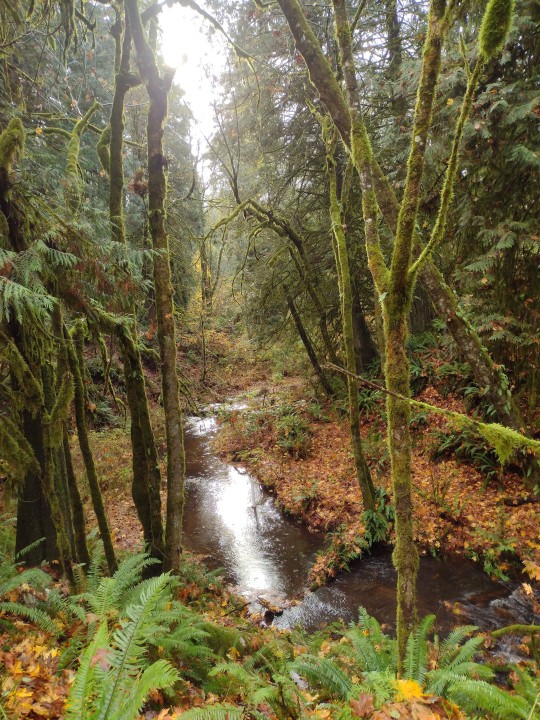
Fall is getting ready to turn into winter
#pnw#fall colors#forests#actually a drainage ditch behind the local community college#phone pics#washington state
499 notes
·
View notes
Text

Happy Holidays from the Forest 🎄
#artists on tumblr#original photographers#original photography#hiking#pacific northwest#nature#nikon#washington#pnw#orofeaiel#happy holidays#forest#landscape#fog#foggy#christmas tree#olympia#evergreen state college#festive#tree
369 notes
·
View notes
Text
i love these boys with all my heart but (as an american (and also as a texan)) it is SO funny to me that nick is having a crisis bc 'his dream uni is so far!!' and 'he can't possibly move so far away from charlie!!!!'
...
babes youre moving 4 hours away
thats such an easy day trip, especially because he drives!!!! sorry for this but it was just such a great example to me of the difference between the us and the uk
#a friend of mine broke up with her boyfriend bc he moved 'so far' for college#he moved from texas to washington state#much more dramatic long-distance conflict imo#but its the uk and nick is NOT leaving the country for uni#this is not a gripe#like i said i just find this hilarious#heartstopper#heartstopper season 3#nick nelson#charlie spring#nick and charlie#nick x charlie
37 notes
·
View notes
Text
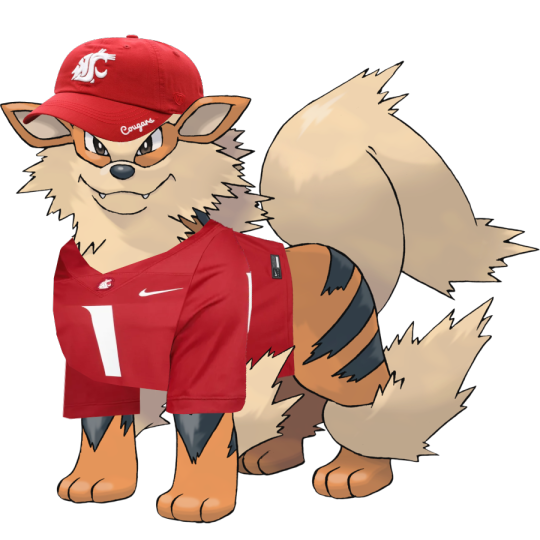
36 notes
·
View notes
Text
Oren Root, a longtime New York City lawyer and Columbia University graduate who was at the school when anti-Vietnam War protests rocked it in 1968, said Shafik's summoning of police was "an extraordinary miscalculation."
"President Shafik and her advisers clearly didn't learn from history," said Root, who was a top editor at The Spectator, the Columbia student newspaper, in 1968 and 1969. “Calling in the cops was clearly a mistake. Things have not gotten any calmer.”
#columbia university#free palestine#protest#Brown University#Providence#Rhode Island#California State Polytechnic University-Humboldt#Arcata#City College of New York#NYC#Columbia University#Barnard College#Cornell#Ithaca#Emerson College#Boston#Massachusetts#Emory University#Atlanta#Georgia#Fashion Institute of Technology#GWU#Washington DC#Harvard#Cambridge#MIT#Michigan State University#East Lansing#Michigan#New York University
19 notes
·
View notes
Text




Your 2023 Heisman Finalists
IG: espncfb
#college football#heisman trophy#bo nix#michael penix#jayden daniels#marvin harrison jr#oregon ducks#ohio state buckeyes#lsu tigers#washington huskies#colleges
20 notes
·
View notes
Text
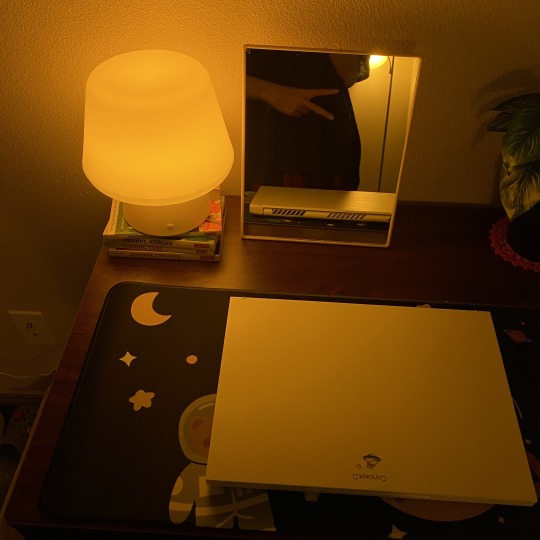
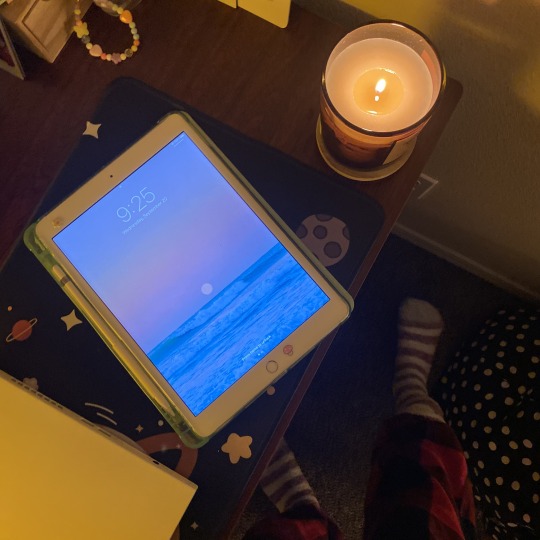
9/20/2023 — Hello, studying world. Today I start my journey of learning Korean with my first university Korean class (online). We didn't have any work on the first day, so all I did was read the syllabus (the most basic, non-informative syllabus I've ever read, ha), set up my new desk space, and updated my student bio on Canvas. I haven't been a college student for about 3 years, so it felt like I accomplished a lot. When the readings and assignments start coming in, I'm sure reality will hit.
I've always wanted to learn Korean, and my goal is to reach a near-fluent level, but I know it'll be hard, especially with my full-time work priorities. Eventually, being able to teach and work in translation is my goal. FYI, Chinese, Thai, and Japanese are on my list, too, but I'll be realistic and focus on one language for the foreseeable future.
Last week, as it so happens, I had to move from my family and childhood home, and I am lacking in the positivity department rn, so I think having a place to chronicle my studies and the progress I make will be good for me. I tend to start a new blog on here when I'm having a hard time, and it helps.
So, the plan is to take two full academic years of Korean (that's 3 quarters per year at my university). That's just how much Korean the school offers. I graduated in 2020 from this same university with a BA in English with a focus on professional and creative writing, and I really enjoyed the overall experience studying here.
I spent a whole lot of time obsessing over grammar, reading new and old literature, trying to understand poetry, and just enjoying the inner peace I felt when writing fiction. It was maybe my most happy time because I had no other real responsibilities or worries besides school. All I did was read and write.
Anyhow, fast forward to now, after pondering different language learning options (which are limited in my area), I decided to take my Korean classes at the university level because the classes will show up on my official university transcripts, and I imagine that will be best when I apply for future Korean-related jobs. I am also hoping that by taking university-level language classes, they will have some sort of superior level of... intensity? accuracy? efficiency? Something like that. Granted, this route isn't the best for my finances, as there is no aid for non-matriculated post-grads, and the cost of a single class is quite ridiculous. But alas, here I am, with an empty wallet and hope in my eyes.
Upon reading the syllabus today, which could basically be summarized as "TBD," I realized the textbook I bought, the textbook I waited over a week for, the one listed on the online course materials list, is, in fact, not the correct textbook.
And, icing on the bitter cake, the correct textbook appears to be a rare Pokémon that isn't available anywhere except the dark corners of eBay, where shipping will take at least 2 weeks. Like how did other students get this? Did they order it two months in advance? Meanwhile, I have my first assignments and readings due Monday.
I quite literally just sent an email to my professor and asked what I should do, so we'll see what she says, but I really wasn't hoping to be that one student, emailing the professor about an issue on day 1.
Since this is my first post here, here also is a tiny bit about me:
My name is Asya ("Asia"), and I'm a 24-year-old English grad based in Washington; no, not the one followed by DC, but the state with a lot of rain and trees. Twilight? Starbucks? Amazon? Yes, that one.
Since graduating in 2020, I've been a freelance editor and writer. I'm taking Korean both for passion and for work purposes, and I really should have started sooner. But I guess we're all on our own timelines.
I've been on Tumblr for a long, long time, but I've never been part of the studyblr sector. I'm glad to be here. :)
#student#college student#back to school#university#korean#korean language#language learning#korean classes#studying#studyblr#study blog#washington#washington state
21 notes
·
View notes
Note
I have the teeniest bit of faith that Phil still has a shot if he can stay away from Jill. During this time that he’s been home, when the camera hasn’t been directly focused on him, he’s been making the faces of someone that would rather be getting a root canal than be where they are in the moment (most notably when the family was opening christmas presents and when David’s mom took the kids to a buffet as their christmas gift). Maybe he’s just got RBF (I do too) but with how long he’s been gone from the house, I feel like there’s a chance that the family facade has shifted for him just the slightest. Has he been away from them longer than Tim was?
Well I definitely hope that's true. Idk I just keep my expectations for the Rodrigues kids low lol so then I can be pleasantly surprised if they do anything..... not Rodrigues-y.
I think Tim was officially in school from 2018-2020, even though he moved schools during that time and sometimes says he's still studying aviation. iirc Phillip started his first year of Bible college a little over a year ago, and then also switched schools and is somewhere new as of last semester. So Tim is the Rodrigues kids who has spent the most unmarried time away from his family.
#honestly it was pretty brave of sheltered tim to go to school in Washington state even for the short time he did#but he ended up having to move back closer to Jill#which is exactly what Phillip did i think? idk#if someone knows his new college let me know i can't remember or find it anywhere#Phillip Rodrigues
11 notes
·
View notes
Text
I’m scared when I’m older that because I’m so in love with the Pacific Northwest and north east coast I won’t be able to choose where to go to university. Or because I’m from the south, I’m scared I’ll never fit in no matter where I go.
#Vent#Idk I just need someone to reassure me and tell me it’ll be okay#I need someone to help me choose#PNW#pacific northwest#North east#New England#Massachusetts#Rhode island#Connecticut#washington state#Oregon#University#College#Higher ed
5 notes
·
View notes
Text

View South from Washington State College (University?) Campus, Pullman, 1972.
My sister lived in a complex of trailers used for student housing located just behind the photographer and now long gone. I am not sure if Washington State was a still a college or had become a university by 1972. When I was a child it was WSC, and I still think of it as such, a trade and tech school.
#landscape#college campus#washington state college#palouse#pullman#whitman county#washington state#1972#photographers on tumblr#pnw#pacific northwest
4 notes
·
View notes
Text
Purple Sand Dollars: How Human Activity Affects Aquatic Life in the Puget Sound
In mid spring, and mid autumn the gravelly sand on Fudge Point is blanketed in dark purple sand dollars. It is mating season these times of year on Harstine Island for these invertebrates. I used to walk down the beach from Island Shore road during low tide to Fudge Point to play with the sand dollars when they were not covered in three feet of icy water. Deep royal purple disks littered the ground, layering over each other in the thousands. I loved to pick up the creatures and feel their tiny cilia tickle my skin as they moved around. As the week ended, the tide left behind the exoskeletons of the sand dollars, and my brothers and I would go out collecting them with our sand pails. Looking at the shells at the star on their backs, you would never have known sand dollars are purple. As the years go by, it seems as if there are less and less sand dollars scattered in the sand. In fact, “in the past 30 years there has been a large recession in the populations of the species which inhabit the Puget Sound. The decrease has been seen in the populations of: forage fish, salmonids, bottom fish, marine birds, harbor porpoise and orcas,” (Environmental Issues in Puget Sound). There are now more cars on the roads, leaving toxins in the ground that the water runoff then carries along with it into the sound. Construction along the 2,500 miles of shoreline is destroying natural habitats in several areas, and causing harm to the wildlife (Impact on Puget Sound). As the population of the area grows, so does the pollution rate, destruction of natural habitat, fishing rate, and introduction of foreign invasive species. All these issues contribute to the loss of natural wildlife in Puget Sound. However there is a possibility, through the cooperation of communities and hard-work of individuals and governments, the sound can be restored.
Pollution in the Puget Sound is an ever growing problem, and it is at least partially attributed to the growing population in the area. Gene Balk from the Seattle Times reports that, “From July 1, 2014 to July 1, 2015, Seattle grew by 2.8 percent — the highest rate among the 50 most-populous U.S. cities. Seattle added nearly 18,000 residents in the one-year period, bringing its population to about 652,000,” (U.S. Census: Seattle now fourth for growth among 50 biggest U.S. cities).As more people drive to and from work each day more fuel emissions and litter are left in the roads, only to end up in the sound with the next rainfall. As a result of this several species of marine life are threatened with endangerment or extinction. Paved areas are an obvious issue here, due to the fact that the soil can not absorb water and filter toxins through the pavement (McIntyre). Research is being done at the Washington Stormwater Center on a popular solution known as green stormwater infrastructure. Giles Pettifor of the King County Stormwater Permit Team describes it as, “Building stormwater control structures that more closely mimic natural settings.” Jennifer McIntyre, a researcher at Washington State University, leads a research team “that’s studying how polluted runoff impacts aquatic animals,” (Campbell). Mcintyre and her research team used green stormwater infrastructure to conduct experiments on Coho salmon. They had filtered water from the highway runoff in a makeshift rain garden, then filled several fish tanks half with the filtered water, and half with unfiltered highway runoff, and put 10 juvenile Coho salmon in the tanks. Katie Campbell from KCTS-9 in seattle reports that, “her [McIntyre] plan was to monitor the salmon for four days, but within 12 hours all the fish that were in the straight highway runoff were dead. And the fish in the filtered runoff? All still alive.” When runoff from rain events leaks into the sewage pipes and causes them to overflow, it is known as Combined Sewage Overflow (CSO). CSO brings many pollutants, harmful pathogens, and excess nutrients into the sound (Environmental Issues in Puget Sound). All of these are detrimental in their own way. Highway runoff and CSO damages marine habitat and makes the water turbid. In some places it is near to impossible for marine life to survive. In northeastern Puget Sound, Hood Canal is experiencing a low-oxygen condition known as hypoxia. This is largely due to the nutrient levels in the water. Excess nutrients contribute to hypoxia in an interesting way. Algae depends on these nutrients to survive and multiply. As they die they release nitrogen into the environment which depletes oxygen levels in the water. With more algae there is less oxygen, creating a much harsher environment for marine species to live in. Besides being detrimental to the physical health of marine animals, pollutants in the water can have other adverse effects. For example, heavy metal pollutants such as lead can cause reproductive harm, slowing down the reproduction of many marine species. King County is currently trying to pass legislation to limit the amount of CSO released into the sound. However, the growing population contributes to the problem and makes it a more tedious task to regulate pollution in the sound. CSO affects marine life indirectly as well by destroying their natural habitats and making them too hostile an environment to support life.
Population increase in the Puget Sound means more development of near-shore areas, which in turn means more destruction of natural habitats. According to the Capital Regional District (CRD), a Canadian government created organization overseeing legislation in the northern sound area, “Human-caused habitat loss...is altering ecosystems on a global scale, often causing destruction that is irreversible.” Richard Feely, of the National Oceanic and Atmospheric Administration’s Pacific Marine Environmental Laboratory and the University of Washington, has found that, “as much as one third of the water on the West Coast is acidic enough to be ‘corrosive’,” and, “by 2050, 50 to 70 percent of the water will be corrosive” (Warshaw). Craig Welch and Steve Ringman, of the Seattle Times, found in their study of CO2 levels and their effects on ocean life that, “Acidification rates expected to occur later this century are already being surpassed.” Besides chemical changes to the environment, physical changes are causing what is known as habitat fragmentation. As the CRD describes it, “Habitat fragmentation occurs when previously connected habitat is split up by human developments such as urban areas, agricultural fields, logging, and roads. This leaves smaller, isolated areas to be available for wildlife - in effect, habitat ‘islands.’ These islands have much more edge area exposed to stressors such as human disturbance, invasive species, and pollution. Fragmentation interrupts the movements, foraging, and hunting behaviors of many animals.” Habitat fragmentation has many man-made causes, including dredging, which destroys habitats at the seafloor. A study was done in 2008 by a group of scholars and scientists from universities and science centers located on each of the US coasts, on the loss of habitat and its potential effect on salmonids in the Puget Sound. Michelle M. McClure et al defined the issue as:
Historically, anadromous salmonids utilized freshwater habitats in the western United States (excluding Alaska) from the coast inland to Montana and Nevada totaling nearly 633,000 km². Large-scale blockages in this region have left only about 56% of that area (~355,000 km²) accessible. Dams constructed for irrigation and hydroelectric power generation are one of the largest culprits in blocking access for these fishes, but culverts and river engineering have also reduced the amount of habitat that anadromous fishes can use. (3)
Their hypothesis was that, “the loss of habitat can potentially affect the evolutionary trajectories of affected species in significant ways,” (2). The theorized effects included altered selective regime which would reduce the variety of traits displayed by the salmonids. The team identified areas with various traits such as, “presence of anadromous salmonids,” “areas that are anthropogenically blocked and currently inaccessible,” and “potential anthropogenic stresses to streams to identify habitats likely affected by changes…” (10) in the environment. They found “significant differences between accessible and inaccessible areas in every metric” (5). For every variable of human impact that they measured, isolated or blocked areas had lower values than accessible areas, “meaning that previously used, but now inaccessible habitats are less affected by human activities and associated changes in flow, temperature, and other characteristics.” Habitat fragmentation has a huge affect on the salmonids, and various other species, of the Puget Sound. “The disruption of connections among local populations,” (10) leads to reduced levels of genetic variation, which leads to a more vulnerable species. The researchers wrote, “Loss of habitat and its attendant consequences have been implicated as the largest threat to endangered species in the United States, and the loss of habitat is seen as the major cause of extinctions,” (1) which seems to remain true through 2016.
Salmon are not facing hardships solely because of habitat fragmentation and destruction. They have been a popular species for hunting for as long as humans and salmon have coexisted, and it is likely that eventually they will be hunted into extinction just like the dodo bird or the great auk. Although many species of salmon are not endangered, their existence is of great importance to many because they are the main food source for Southern Resident orca whales, which were labeled endangered as of 2005, being a subspecies of orca unique to the area. Groundfish in the Puget Sound are often overfished and are threatened with endangerment as well. An article by the Sierra Club, which “supports the effort to establish Marine Reserves in the coastal waters of Washington State,” notes that, “Washington now leads the continental united states in having the most endangered species and the most depressed fisheries in North America.” Boris Worm, a fisheries biologist at Dalhousie University in Canada, commented, “The loss of [oceanic] biodiversity continues at a pace that’s not slowing down. On average, the conditions of the oceans continues to get worse,” in an interview with Mother Jones Magazine. Despite the grim outlook of the scientific community, the Sierra Club article describes how building Marine Reserves (MRs) and Marine Protected Areas (MPAs) can help repopulate dwindling species. “A network of Marine Reserves...recreates near pristine complete ecosystems and gives fisheries management professionals a benchmark to gauge whether management protocols are working,” eventually the goal is to produce 4-7 times more fish than there are currently (Marine Reserves in Puget Sound and Washington). The state of Washington is becoming one of the first to take “genuine” steps towards protecting “areas of critical habitat” with the Washington Department of Fisheries and Wildlife’s (WDFW) Puget Sound Rockfish Conservation Plan. This plan will use MRs and MPAs to begin to regrow the populations of rockfish in the Puget Sound. Utilizing these systems on a bigger scale could be a possible solution to protecting the species of northwestern Washington and other parts of the world.
Although not completely caused by humans, invasive species are another leading cause of animal endangerment in Puget Sound. These invaders, sometimes called nuisance species, are introduced to the environment in one way or another, and change the competition of the entire ecosystem (Environmental Issues in Puget Sound). There are many ways foreign species make their way into the sound. They can spread to many places through the importation of seafood, attaching themselves to the hulls of ships, natural dispersal, etc. The most destructive species currently are marine grass that traveled all the way from Japan after the many tsunamis that took place. Although large brown alga may be the homes of many Pacific herring eggs, it out competes the native kelp, and causes the water to be more murky and turbid; an uncomfortable environment for many native species (Invasive Species in King County). Animals like oyster drills, zebra mussels, and tunicates are a few examples of species that attach themselves to the hulls of ships and travel thousands of miles until they reach the Puget Sound area. The WDFW is currently trying to solve the issue of invasive species with their Nuisance Species Management Plan. Allen Pleus of WDFW reports that, “Preventing the introduction and spread of aquatic invasive species in Washington is challenging and unpredictable. Discovery and continued findings of potentially invasive species on Japanese tsunami marine debris is a good example of a new threat to the state’s coastal waters” (Aquatic Invasive Species). The Nuisance Species Management Plan involves the state’s Patrol Commercial Vehicle Inspectors searching incoming vessels for animals that may have attached themselves to the underside of ships, and then promptly removing any they find before they have the chance to spread. In Olympia, the city has worked with the Environmental Protection Agency (EPA) to implicate an interesting plan to deal with their arched slipper limpet snail problem. The city is taking the shells of these pests and packing them into the sidewalk to slow down runoff and the flow of of stormwater into the sound. The program manager at Olympia’s Department of Public Works, Emmett Dobey, has said that, “The process also seemed to reduce the amount of pollutants that typically come along for the ride,” which implies that these shells could be part of a bigger plan to restore the natural beauty and biodiversity of the sound (Environmental Issues in Puget Sound).
Now that I am an adult, I look across the water of the Puget Sound and can’t help but feel a little sad. I am sad for all the marine life that will inevitably be wiped out as time goes on. Some critics such as Stewart Brand, author of Whole Earth Discipline, believe that, “Viewing every conversation issue through the lens of extinction threat is simplistic and usually irrelevant,” because extinction is something that happens naturally, and there are more important issues plaguing our planet currently (Rethinking Extinction). Others like Elizabeth Kolbert, author of The Sixth Extinction, believe that extinction is an important issue that we should do something about. It is clear that humans have a big impact on the health and biodiversity of Puget Sound through pollution, destruction of natural habitat, overfishing, and introduction of invasive species among other things. Hopefully through the work of WDFW and the local communities the sound can be restored and the marine life can thrive the way it once did long ago.
Written for Portland Community College, May 2016
-------
Works Cited
Brand, Stewart. "Rethinking extinction." Aeon Essays (2015): n.p. Web. 25 May 2016.
"Invasive Species in King County." King County. N. p., n.d. Web. 31 May 2016.
"Environmental Issues in Puget Sound." Wikipedia. N.p., 2016. Web. 25 May 2016.
Beechie, Timothy J. "Evolutionary Consequences of Habitat Loss for Pacific Anadromous Salmonids." Blackwell Publishing Ltd. (2008): 19. Web. 31 May 2016.
Smith, Joel P. "Water Out of Fish: Are We Overfishing Our Oceans?" Sound Consumer. PCC Natural Markets, July 2012. Web. 25 May 2016.
Vaidyanathan, Gayathri. "Puget Sound Orcas To Remain on Endangered List." Discovery. 17 Aug. 2013. Web. 25 May 2016.
"Marine Reserves." Sound Science. n.d. Web. 25 May 2016.
"Habitat Loss and Degradation." CRD, n.d. Web. 31 May 2016.
"Marine Reserves in Puget Sound and Washington." Sierra Club, n.d. Web. 31 May 2016.
"Scientists Search for Solution to 'Toxic Cocktail' in Washington's Puget Sound." . PBS Newshour, 14 Mar. 2013. Web. 25 May 2016.
Pleus, Allen. "Aquatic Invasive Species." Washington Department of Fish & Wildlife, n.d. Web. 31 May 2016.
Warshaw, Amelia. "Ocean Acidification: Just One of the Challenges Facing Marine Ecosystems." Pulitzer Center, 4 Aug. 2014. Web. 31 May 2016.
#puget sound#marine life#washington state#research article#writing sample#portland community college#extinction#conservation#endangered species
2 notes
·
View notes
Text
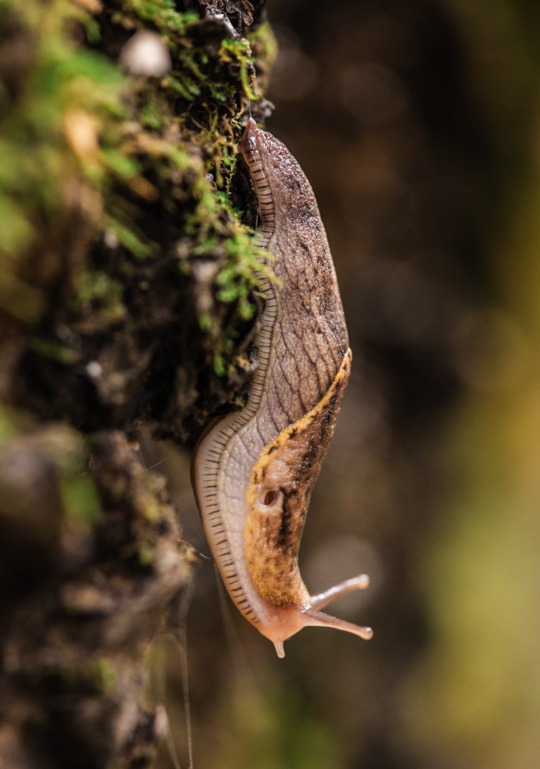
Yellow-Bordered Taildropper Slug
#artists on tumblr#original photographers#original photography#hiking#pacific northwest#nature#nikon#washington#pnw#orofeaiel#wildlife#yellow-bordered taildropper#slug#macro photography#forest friends#goblincore#naturecore#olympia#evergreen state college
129 notes
·
View notes
Text
The Whiskey Rebellion
The story of the Whiskey Rebellion as though it was a fraternity rebelling on campus. George Washington is recast as the dean.
#bad idea#movie pitch#pitch and moan#whiskey rebellion#american history#united states#united states of america#the whiskey rebellion#rebellion#fraternity#george washington#comedy#college#dean#whiskey
2 notes
·
View notes
Text

27 notes
·
View notes
